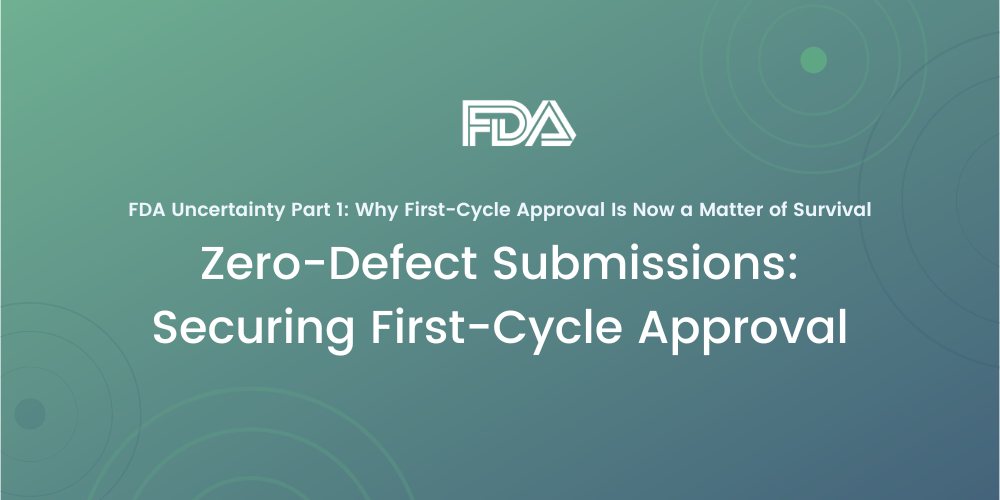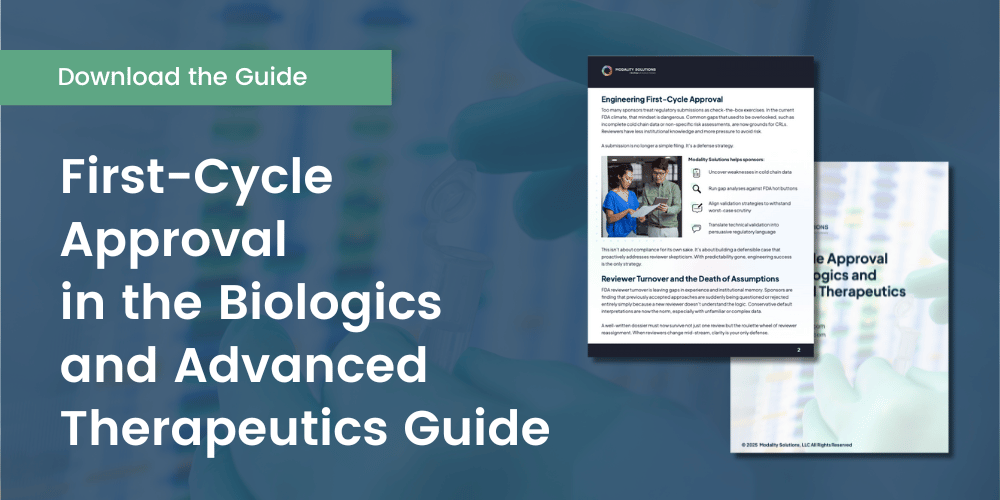Zero-Defect Submissions: Securing First-Cycle Approval
FDA Uncertainty: Why First-Cycle Approval Is Now a Matter of Survival Leadership shake-ups, budget...
read Details

At a Glance
You’ve submitted a new drug application (NDA) or a biologics license application (BLA) for your new drug candidate. Congratulations! Now the long wait begins. Or not.
The US Food & Drug Administration (FDA) strives to review and act on applications within ten months for standard review or six months for priority review, but that doesn’t mean you won’t hear from them in the interim. In fact, it’s common for the FDA to issue an Information Request (IR) during its review cycle. When that happens, it’s critical that you respond quickly, effectively—and with the confidence that lets you rest easy—so your vaccine or therapeutic stays on track for a timely approval.
How and Why You Might Receive an IR
The FDA issues an IR when application reviewers need additional information or clarification on your NDA or BLA. The review team can issue an IR at any point in the review cycle for any section of your drug or biologic application.
IRs are issued while the application review is in progress, not upon its completion, and the review team considers your IR response during its normal review cycle. The good news is that the overall timeline for your review—your “review clock”—does not stop when the IR goes out. However, because the process keeps moving, you must respond promptly, thoroughly, and strategically to the IR. Although uncommon, if your response is significant enough to be considered a major amendment and received within the last three months of the review cycle, it could push the agency’s action due date out by three months.
For temperature-sensitive vaccines or therapeutics, various cold chain issues can trigger an IR. In Modality Solutions’ experience helping pharmaceutical and biotech companies respond to FDA notifications, the following are among the most common cold chain-related issues:
The “Good Night’s Sleep” Approach to Responding Successfully
An IR from the FDA can feel stressful, but it doesn’t have to rob you—or your organization—of valuable rest. When it comes to cold chain management, Modality Solutions aligns its expertise with your needs, aiming to deliver more than just data or one-time services. Our philosophy focuses on enabling you to sleep soundly, assured that your processes, reputation, and operations are protected. Below are strategies we recommend for responding to an IR while preserving your peace of mind:
Case in Point: Crafting a Successful IR Response
When a Modality Solutions client received an IR after filing a BLA for its antibody-drug conjugate (ADC), our engineers leveraged their experience with 250+ regulatory interactions to help the company respond—quickly and effectively. The ADC comprised a linker, a toxin, and a monoclonal antibody, but the client had not performed transport simulation testing on the monoclonal antibody separately.
During the FDA review cycle, the agency issued an IR requesting data to support the product’s quality under representative or worst-case shipping conditions. Modality Solutions rapidly designed and executed a transport simulation protocol for the mAb in our Transport Simulation Laboratory. We then provided the comprehensive results needed for the client’s IR response. This thorough, data-driven approach alleviated worries about potential delays, ensuring the review cycle kept moving forward. Ultimately, the client received full approval, allowing them—and their leadership team—to rest easy, knowing their ADC met FDA requirements.
The Importance of Sleeping Well in the Long Run
Every IR response is a chance to build greater confidence in your processes and expertise. By proactively addressing cold chain management issues, you reinforce regulatory compliance while laying the groundwork for more efficient and sustainable operations. For Functional VPs and other leaders tasked with the success of their programs, these collective efforts mean far fewer sleepless nights. Modality Solutions’ approach transcends the mere “mattress” of technical solutions by offering the “good night’s sleep” of true peace of mind—through robust data, effective strategies, and proven sustainability practices.
Ready to Rest Easy on Your FDA Submissions?
Responding quickly and effectively to an IR is vital to keeping your NDA or BLA review on track. Modality Solutions has extensive experience helping pharmaceutical and biotech companies respond successfully to IRs, with exceptional outcomes. By partnering with us, you’ll not only streamline your review process but also gain the confidence that your cold chain logistics are optimized, sustainable, and fully compliant.
Schedule a free consultation to learn how our proven approach and “good night’s sleep” philosophy can help you successfully file your drug product—and keep your peace of mind throughout the process.
FDA Uncertainty: Why First-Cycle Approval Is Now a Matter of Survival Leadership shake-ups, budget...
read Details
Competing in today’s biopharma environment means facing an FDA that no longer plays defense....
read Details
Demonstrating Product Quality All pharmaceutical manufacturers must ensure that the safety and efficacy of...
read Details